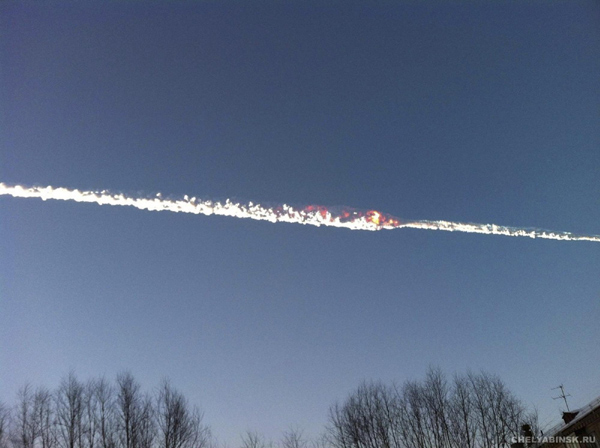Russia cleans up after meteor blast
Updated: 2013-02-17 10:36
(Agencies)
|
||||||||
CHELYABINSK, Russia - Thousands of Russian emergency workers went out on Saturday to clear up the damage from a meteor that exploded over the Ural mountains, damaging buildings, shattering windows and showering people with broken glass.
Divers searched a lake near the city of Chelyabinsk, where a hole several meters wide had opened in the ice, but had so far failed to find any large fragments, officials said.
The scarcity of evidence on the ground fuelled scores of conspiracy theories over what caused the fireball and its huge shockwave on Friday in the area which plays host to many defence industry plants.
Nationalist leader Vladimir Zhirinovsky told reporters in Moscow it could have been "war-mongers" in the United States. "It's not meteors falling. It's a new weapon being tested by the Americans," he said.
A priest from near the explosion site called it an act of God. Social media sites were flooded with speculation about what might have caused the explosion.
"Honestly, I would be more inclined to believe that this was some military thing," said Oksana Trufanova, a local human rights activist.
Asked about the speculation, an official at the local branch of Russia's Emergencies Ministry simply replied: "Rubbish".
Residents of Chelyabinsk, an industrial city 1,500 km (950 miles) east of Moscow, heard an explosion, saw a bright light and then felt a shockwave that blew out windows and damaged the wall and roof of a zinc plant.
The fireball traveling at a speed of 30 km (19 miles) per second according to Russian space agency Roscosmos, blazed across the horizon, leaving a long white trail visible as far as 200 km (125 miles) away.
NASA estimated the object was 55 feet (17 meters) across before entering Earth's atmosphere and weighed about 10,000 tons.
 |
|
The trail of a falling object is seen above the Urals city of Chelyabinsk Feb 15, 2013, in this picture provided by www.chelyabinsk.ru. [Photo/Agencies] |
It exploded miles above Earth, releasing nearly 500 kilotons of energy - about 30 times the size of the nuclear bomb dropped on the Japanese city of Hiroshima in World War II, NASA added.
"We would expect an event of this magnitude to occur once every 100 years on average," said Paul Chodas of NASA's Near-Earth Object Program Office at the Jet Propulsion Laboratory in Pasadena, California.
"When you have a fireball of this size we would expect a large number of meteorites to reach the surface and in this case there were probably some large ones."
Related stories:

 Li Na on Time cover, makes influential 100 list
Li Na on Time cover, makes influential 100 list
 FBI releases photos of 2 Boston bombings suspects
FBI releases photos of 2 Boston bombings suspects
 World's wackiest hairstyles
World's wackiest hairstyles
 Sandstorms strike Northwest China
Sandstorms strike Northwest China
 Never-seen photos of Madonna on display
Never-seen photos of Madonna on display
 H7N9 outbreak linked to waterfowl migration
H7N9 outbreak linked to waterfowl migration
 Dozens feared dead in Texas plant blast
Dozens feared dead in Texas plant blast
 Venezuelan court rules out manual votes counting
Venezuelan court rules out manual votes counting
Most Viewed
Editor's Picks

|

|

|

|

|

|
Today's Top News
Boston bombing suspect reported cornered on boat
7.0-magnitude quake hits Sichuan
Cross-talk artist helps to spread the word
'Green' awareness levels drop in Beijing
Palace Museum spruces up
First couple on Time's list of most influential
H7N9 flu transmission studied
Trading channels 'need to broaden'
US Weekly

|

|








